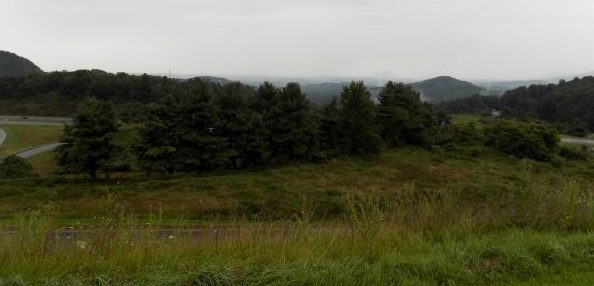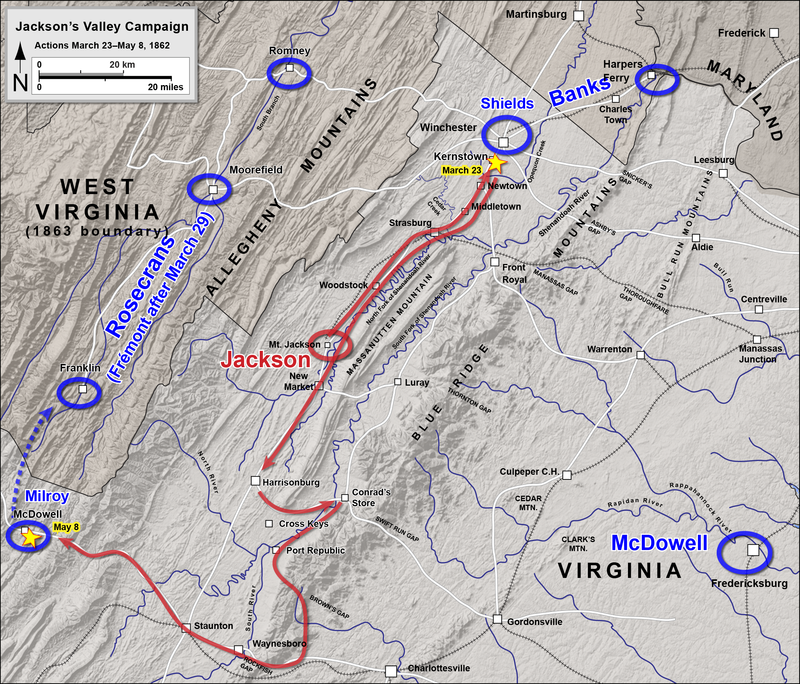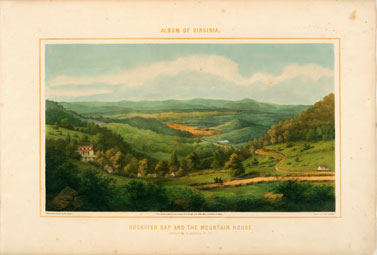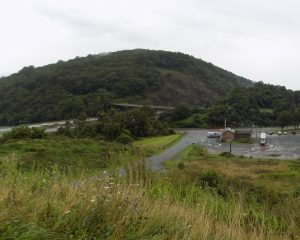ECW Weekender: Rockfish Gap
 Driving on Virginia’s Interstate 64? You’ll cross Rockfish Gap to leave or enter the Shenandoah Valley and drive right through a place of history. Situated about 16 miles east of Staunton and just above Waynesboro, the gap offers a crossing in the Blue Ridge Mountains and was a route for armies during the Civil War.
Driving on Virginia’s Interstate 64? You’ll cross Rockfish Gap to leave or enter the Shenandoah Valley and drive right through a place of history. Situated about 16 miles east of Staunton and just above Waynesboro, the gap offers a crossing in the Blue Ridge Mountains and was a route for armies during the Civil War.

Rockfish Gap is one of the lowest crossing points at just 1,900 feet above sea level. Early colonial settlers used the area as they headed into the Shenandoah Valley. The original route probably followed an east/west trail used by Native American, but the the 1780’s a more developed road allowed carriages to cross the gap while inns and taverns located about every ten miles welcomed a traveler on his journey to Richmond or the frontier.
In the 1850’s, the Blue Ridge Railway Company completed surveys and built tunnels – a series of four underground passages to take the iron rails over the mountains near Rockfish Gap.
During his 1862 Valley Campaign, “Stonewall” Jackson took full advance of the gap and the railroad. In one of his mystifying tactics, he left the newly-arrived Richard Ewell and his division at Swift Run Gap (farther north) and marched his own men south to Port Republic, then east over the mountains toward Charlottesville; however, on May 4, Jackson put his men on trains and hauled him back over the Blue Ridge Mountains via Rockfish Gap. Once they arrived near Staunton, they continued west, eventually fighting the Battle of McDowell on May 8.

Troops crossed in and out of the Valley via Rockfish Gap during all the war years, and another important movement occurred in March 1865.
On March 2, 1865, General Philip Sheridan’s cavalry attacked the remaining Confederate forces under General Jubal Early near Waynesboro, a small town sitting just below and west of the gap. The battle marked the last truly organized fight the Confederates attempted in their beloved Valley and it did not go well for them. Federal cavalry led by George Custer pushed the Rebel forces through Waynesboro, capturing hundreds. Early, some of his officers, part of the Laurel Brigade cavalry, and broken remnants of other units escaped through Rockfish Gap and most joined the Army of Northern Virginia. The Battle of Waynesboro resulted in about nine Union casualties and about 1,500 killed, wounded, missing, or captured Confederates. Without the gap, the entire force probably would have been captured.

(ECW Editor Sarah Kay Bierle talks about Shenandoah Valley history and included some video footage shot at Rockfish Gap on a cloudy and windy day in her recent production for Gazette665; if you’re interested, find the video here on YouTube. Rockfish Gap footage starts at 7:49 on the clip.)
Take Exit 99 off Interstate 64 and follow signs for Rockfish Gap Tourist Information Center. Located high on the slope, this parking lot overlooks the gap and faces west, toward the Valley and offers spectacular views on a clear day.
Tourist Information Center: 130 Afton Cir, Afton, VA 22920
Inside the Tourist Center, you’ll find a scaled, diorama map of the Shenandoah Valley. Bring along your notes for any Civil War campaign in the region since this is a great place to “see” how the armies moved. If you’re new to the Valley area or just starting your “boots on the ground” research, this is an excellent resource to help visualize the military campaigns. It’s also a good way to show your traveling companions how the campaigns worked; just walk them around the display and teach the informal history class. You’ll also find travel brochures for historic sites, local attractions, and dining in the Valley Region.
Need a little snack? King’s Gourmet Popcorn Stand – located below the Tourist Center – is a fun stop! Try one of their uniquely flavored popcorn bags.
From Rockfish Gap, you’ll continue either west into the Valley or east toward central Virginia. Or…head into Shenandoah National Park and begin a journey on Skyline Drive; Rockfish Gap is the southernmost entrance point for this Park.

And not far away is Blue Mountain Brewery, the best to visit in Virginia in my opinion.
Nice! Thanks for adding that note, Edward.
Wow! Great videos on YouTube! You sound professional already, Sarah. It was tough to hear you at Rockfish Gap because of the wind. Look forward to future videos. I would like to see Emerging Civil War do these type of videos, also.
Great article! But a slight correction: Early and most of his staff did not escape through Rockfish Gap. Confederate soldier DeWitt Gallaher (who was present shortly after the battle ended) and whose family was from Waynesboro noted the following in his diary:
“Wagons, cavalry, hundreds on foot became a mingled mass of crowded
fugitives, Yankees on their fleetest horses, trying, as they said, to capture
even General Early himself, but he escaped at the ford at the R.R. bridge
below and thru Turks Gap six miles away [north]. Nearly every Confederate was
captured, and all the artillery, wagons, etc. The prisoners were placed in the
meadow at the mill race and sent to Winchester under guard the next day.”
And Early noted the following:
“I then rode with the greater part of my staff and fifteen or twenty others,
including General Long, across the mountain, north of the Gap, with the
hope of arriving at Greenwood depot . . .”
Although Early never specifically mentions Turks Gap, the old road (today a horseback riding trail) descends on the east side of the mountain to a fire road that descends from Jarman Gap. So Gallaher’s assertion would make geographical sense when compared to Early’s less precise description of his escape route. Even though Early and his staff did not head toward Rockfish
Gap, a number of other Confederate soldiers did.
Jackson used, on at least one occasion, the Blue Ridge Tunnel built by Claudius Crozet. As a teenager, I hiked through it twice with some buddies; as did my father before me. Of course, that was illegal at the time as the railroad still owned it and no trespassing signs were posted. I was about 15 years old. The tunnel is now under renovation to be used as a bike bath and tourist attraction. I was born and raised in Waynesboro and Augusta County and still live in the foothills on the west side of the Blue Ridge in the Shenandoah Valley, just below the parkway. Many of my ancestors – McGanns, Campbells and Coffeys – helped settle Rockfish Valley and many still live there today.